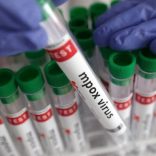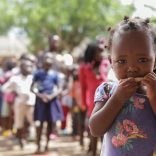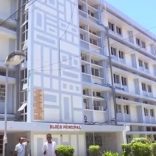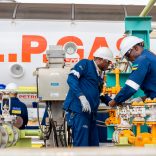Mozambique: PDUNM will rebuild two thousand houses and generate around eight thousand jobs
Official numbers on medical treatment for substance abuse rise in 2024, Maputo city leads

FILE - For illustration purposes only. [File photo: Evidencias]
Health units treated 23,409 patients in connection with substance abuse in 2024, of which 11,355 were in the city of Maputo, the Mozambican capital, a figure that represents 48.5% of the country’s total registered cases. The provinces of Manica (6,451) and Sofala (2,606) follow, with alcohol and cannabis sativa among the most consumed substances.
This information was released by the Central Office for the Prevention and Combat of Drugs (GCPCD) at a press conference in Maputo on Thursday (22-05) for the presentation of the “Annual Report on the Evolution of Illicit Drug Consumption and Trafficking Registered in the Country, in the Year 2024”.
The majority of patients with mental and behavioural disorders (MBDs) are mostly young people, including teenagers and women, who were admitted to psychiatric and mental health services due to the consumption of psychoactive substances, which represents an increase of 41.78%, when compared to 16,511 patients treated in the same period in 2023.
“Alcohol and cannabis sativa continue to be the main causes of seeking medical care due to their abusive use and mental health services are increasingly closer to the community, which allows for greater patient care and, therefore, contributes to the early diagnosis of MBDs,” head of the Department of Public Education and Outreach, José Bambo, told the press conference.
The sale and consumption of alcoholic beverages, tobacco and their derivatives occur most frequently in food and beverage areas near educational establishments and their surroundings, as well as in entertainment venues, gyms and gambling venues.
“In the city of Maputo, 23 establishments near schools out of a total of 56 were inspected, and 15 notices were issued to close their activities, due to the fact that the establishments were very close to the educational institutions,” he said.
Bambo also stressed that infractions were detected, such as the frequency of minors in nightlife establishments, the lack of signs prohibiting the entry and stay of minors under 18 years of age in these establishments, the sale and consumption of tobacco and alcoholic beverages by minors under 18 years of age, and the lack of reserved areas for smokers in some tourist establishments.
He also highlighted the main constraints that conditioned the activities to prevent and combat drug use and trafficking in 2024, the lack of specialized personnel; the lack of financial, human and material resources for criminal investigation; the lack of equipment and resources (air, sea and land) and the lack of specialized centres for the treatment and rehabilitation of drug addicts.
In fact, he explained that the country has been used by drug traffickers as the main drug corridor to different parts of the world, using the routes Afghanistan-Pakistan-Pemba-Zambézia-Maputo-South Africa (methamphetamine, heroin and amphetamine); São Paulo-Addis Ababa-Maputo-South Africa (cocaine); São Paulo-Lisbon-Maputo-South Africa (cocaine), and India-Mozambique (cocaine).
“In this period of 2024, the drugs were hidden in suitcases, columns, anti-transparent materials, sweets, as well as inside drums, books, drums, sanitary ware, vehicles, fishing boats and homes,” he added.
Authorities claim that Mozambique is preferred by drug traffickers due to its geographical location, vast land borders, extensive coastline and the existence of a transport and communications system that serves the southern region of Africa, factors that organised crime seeks to use to its advantage in its illicit activities, including the trafficking of drugs and other prohibited substances.
According to the head of the Central Department for Crimes against Public Order and Peace, Eusébio Nhamússua, preventing and combating the trafficking of narcotic drugs and psychotropic substances and preparations or other substances with similar effects depends on reducing the supply of drugs, through the presence of inspectors in places prone to drug entry, schools, communities and air, land and sea borders.
“It is also necessary to increase awareness and sensitization among adolescents, young people and the general public about the harmful effects of drug use and trafficking, prioritizing the use of information and communication technologies (ICTs), in coordination with community leaders, religious denominations, civil society and cooperation partners,” Nhamússua added.
The international Day against Drug Abuse and Illicit Trafficking, or ‘World Drug Day’ is marked on 26 June every year to strengthen action and cooperation in achieving a world free of drug abuse.












Leave a Reply
Be the First to Comment!
You must be logged in to post a comment.
You must be logged in to post a comment.